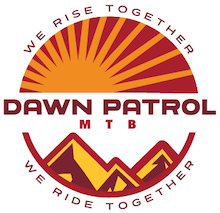When you walk into a bike shop or browse a bike company’s website, you’ll find a wide variety of different mountain bikes. Mountain biking consists of different categories or styles of riding, and there are specific bikes that cater toward the unique demands of each riding genre. What mountain bike you should buy if you’re new to the sport?
There are clear differences between mountain bike types that you should know about when shopping for your first mountain bike. The first question you’ll face is whether you want a hardtail or full-suspension mountain bike.
Hardtail vs full-suspension

Hardtails are bikes with no rear suspension. Usually they will have front suspension, also called a fork, but hardtails with non-suspended, rigid forks do exist too. Hardtails are generally considered cross country bikes. Cross country is the discipline of mountain biking you’ll see at the Olympics, and is all going as fast as possible across all types of terrain.
Since hardtails do not have rear suspension, they can be somewhat jarring on rough and technical downhill trails. However, the benefit of a hardtail is unprecedented stiffness and speed on dirt road climbs and smoother sections of trail. Because they have less parts, hardtails are more cost-effective than full-suspension bikes, making them a great option for riders on a budget.
Types of full-suspension bikes

Full-suspension bikes feature both front and rear suspension. There are cross country full-suspension bikes, as well as trail bikes, enduro bikes, and downhill bikes. Those latter three categories are distinguishable by how much travel the suspension has, with downhill bikes sporting the most suspension travel of all.
Full-suspension bikes are more expensive than hardtails, but they offer a plusher ride on rough trails, and rear suspension actually helps with traction on climbs, too.
Beyond cross country, the next category of full-suspension bike is a trail bike, like the Alchemy Arktos pictured above. Trail bikes feature between 120 and 160mm of suspension travel and are designed as jacks of all trades. They climb well and descend well, but they won’t be as lightweight as a cross country bike, nor as capable on the descents as a full downhill bike. Incidentally, trail bikes are the most appropriate choice for the widest variety of trails and riders.
Moving up in the travel range, enduro bikes generally feature 160-180mm of travel. Enduro bikes are similar to trail bikes but are designed to have more bias toward downhill performance. They are mini downhill bikes that you can pedal up the mountain instead of taking a chairlift or vehicle shuttle.
At the top end of the suspension travel spectrum are downhill and freeride bikes, which will have 200+mm of travel. These bikes are designed to be ridden downhill as fast as possible, hitting all of the technical terrain and big jumps on the way down. They are not good at much else though, so you won’t want to pedal one uphill, or on flat terrain for long distances.
What mountain bike should I buy?

What mountain bike you should buy depends on what type of terrain you’ll spend the most time riding. But you’ll also want to consider what type of riding you may want to ride in the long term, and of course what your budget is. In fact, that last consideration — your budget — is perhaps the best place to start. That will narrow down your list of candidates quickly.
If you live in a place with mostly smooth trails, a hardtail could be the best bet. If you want a bike that’s better on long, rough downhills, you might be drawn more toward a full-suspension bike. A trail bike, with between 120mm and 160mm of travel, is often the best choice for the widest variety of trails and rider abilities.
There’s also no question that hardtails are cheaper than full-suspension bikes. The best way to see the differences between these types of bikes are to take a test ride from a bike shop or demo event. Your local bike shop is a great place to continue your education.
Be sure to check out our beginner mountain biker resource page for more great information on getting started in mountain biking.


